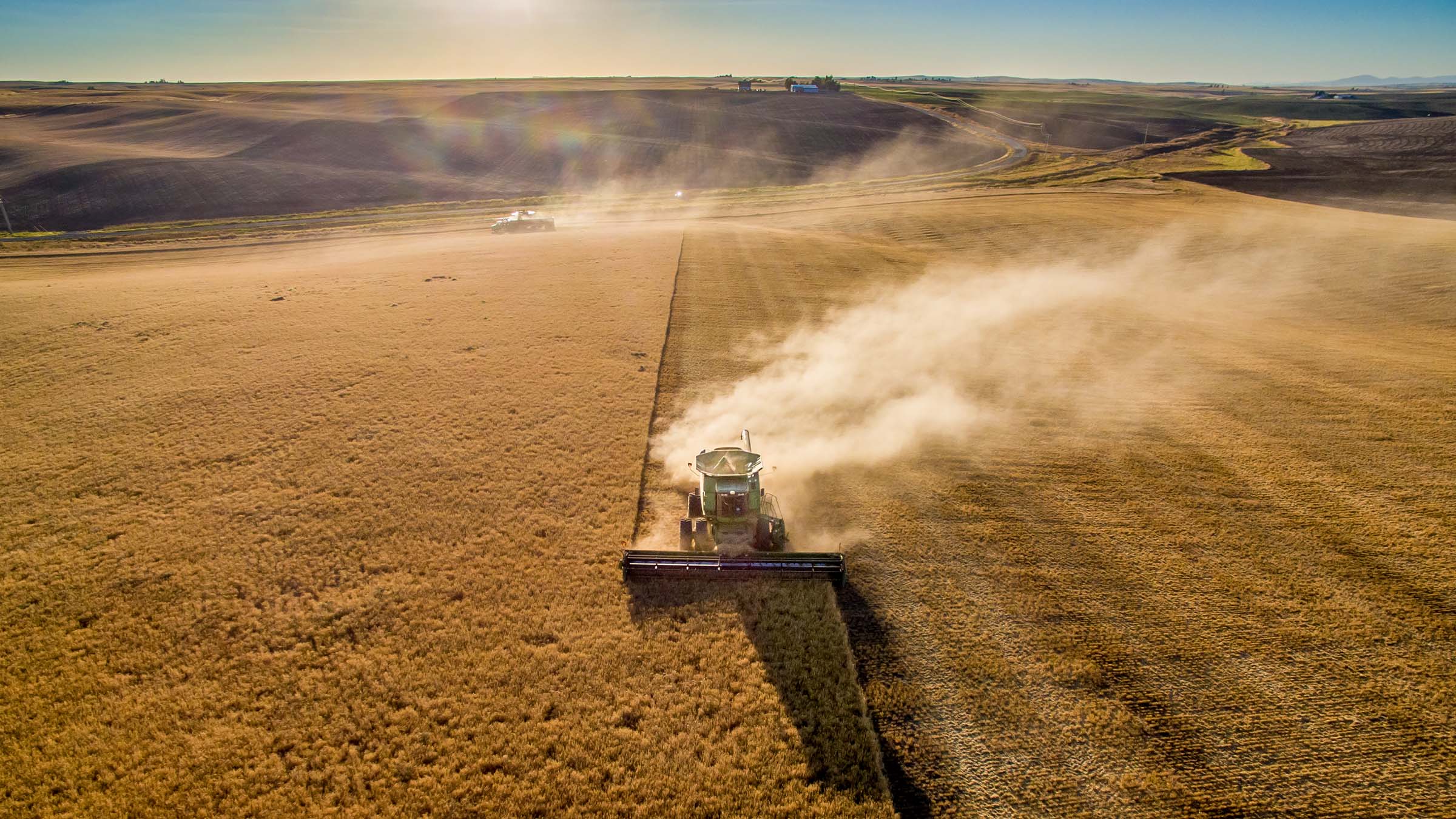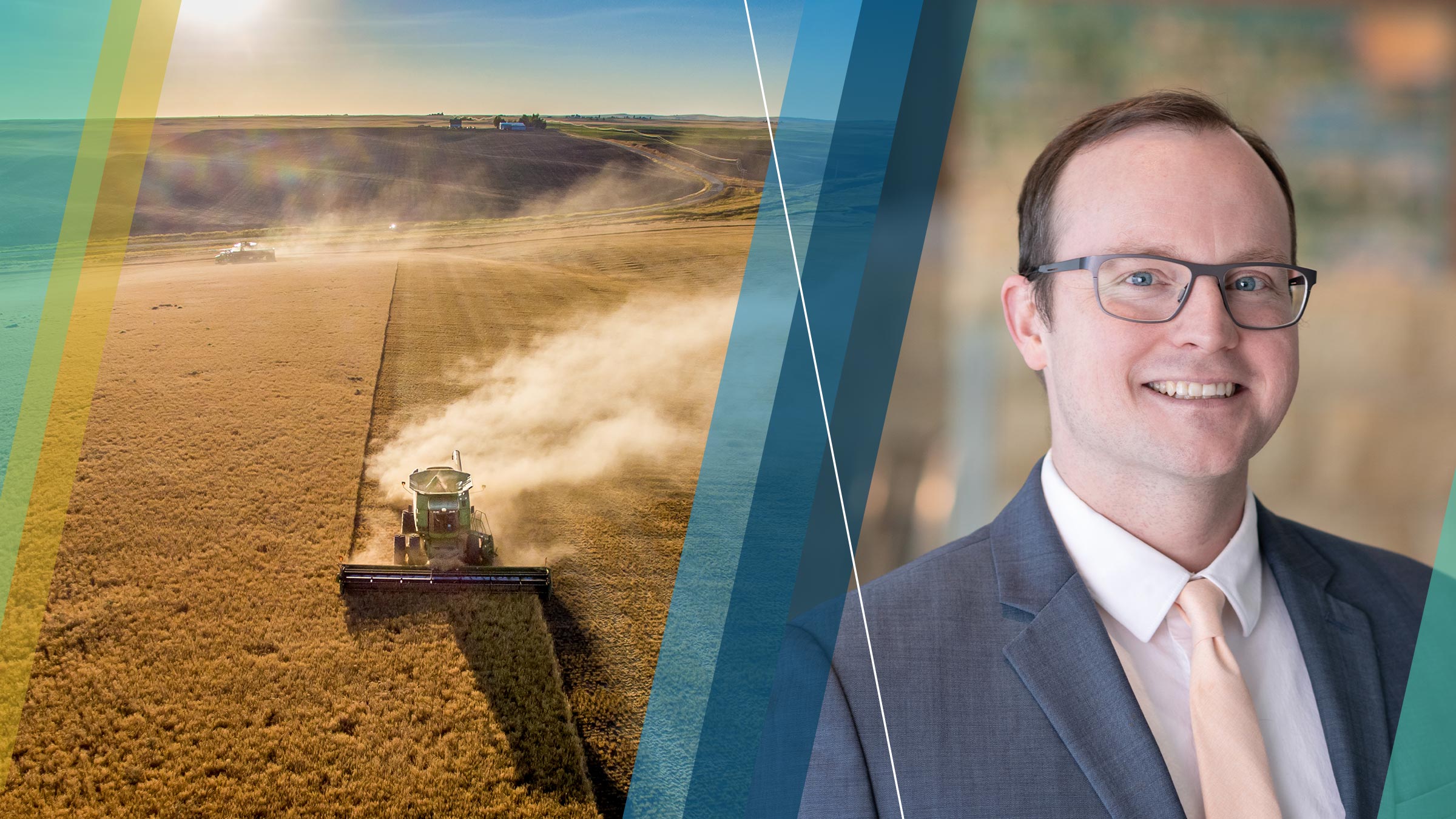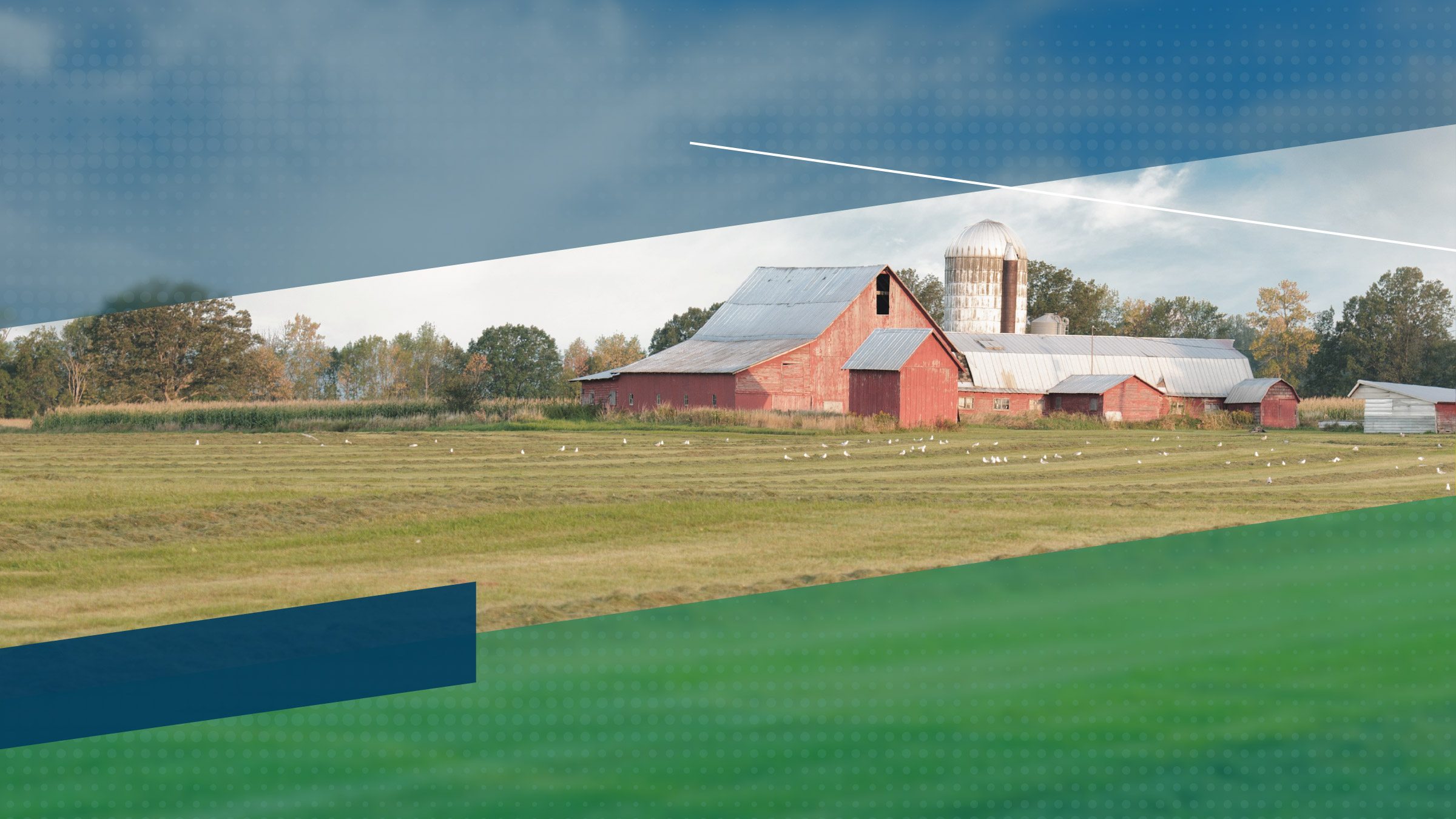Weather this summer has been good for crop production in much of the Ninth District, but crop prices have not been friendly to farmers’ pocketbooks. “High operating cost and lower grain prices are the biggest concern,” commented a North Dakota farm lender.
Farm incomes decreased across the Ninth District, according to lenders responding to the second-quarter Ag Credit Survey by the Minneapolis Fed. Lenders also reported that spending on capital equipment fell, and farm household purchases edged lower on balance. With a weaker cash position, demand for loans jumped; loan repayments also dropped, and loan renewal and extension activity increased. Interest rates for agricultural loans decreased slightly but remained high. Cropland values were mixed, while cash rents fell from a year ago. The outlook for the third quarter of 2025 is pessimistic, with survey respondents expecting a further decrease in incomes.
Farm income and spending
Bankers broadly reported that farm incomes fell. District-wide, 81 percent of agricultural lenders surveyed said incomes decreased from April through June compared with the same period a year earlier, while only 2 percent reported increased incomes. The second quarter marked two years of weak farm incomes, after a short period during which they were very strong (see chart).
Capital expenditures also dropped: 69 percent of respondents reported decreased investment in equipment and buildings from a year ago, compared with 10 percent who reported increased spending. Consumer spending by farm households declined more moderately. Just under one-third of lenders reported decreases in spending, and 26 percent reported increases.
Loan demand and credit conditions
“Prices are below break even for most producers,” wrote a Minnesota banker, “A majority will have to refinance [loans].” Just over a third of banks reported that loan renewals or extension activity increased in the second quarter; the remainder said that renewals held steady. More than half of respondents indicated that loan demand increased from last year, compared with 10 percent who said it was lower.
Credit conditions weakened overall, as 43 percent of lenders indicated that the rate of repayment on agricultural loans decreased relative to a year ago, and the remainder reported that repayment rates held steady. While most lenders reported no change to collateral requirements on loans, 14 percent said collateral requirements increased. No respondents reported having refused a loan due to a shortage of funds.
Farm borrowers got a bit more relief from falling interest rates. Fixed and variable rates on operating, machinery, and real estate loans all decreased for the second quarter.
Land values and cash rents
While farmland values in the district have been rising over the last four years, the picture shifted in the second quarter and was mixed by land type. Ninth District nonirrigated cropland values were barely changed, decreasing by 0.1 percent from the second quarter of 2024. Meanwhile, irrigated cropland values rose by 2 percent from a year earlier, while ranch- and pastureland values also increased 2 percent.
Changes in land values and rents were also mixed across the region. Nonirrigated cropland prices fell slightly in North Dakota, were unchanged in South Dakota, increased slightly in Minnesota, and rose 4 percent in Montana.
The district average cash rent for nonirrigated land decreased 4.7 percent from a year ago, while irrigated land rents fell by 0.6 percent. In contrast, cash rents for ranchland increased 8.3 percent.
Outlook
The outlook for the next few months called for further downward momentum in incomes. Across the district, 74 percent of lenders said they expect that farm income will decline (year over year) in the third quarter of 2025, compared with 10 percent who forecast increases. The outlook for capital spending was similarly negative, and expectations for household spending was negative on balance, with 43 percent expecting it to decrease.
Lenders predicted that loan demand will increase on balance in the upcoming quarter, as 48 percent of lenders said they expect increases in demand, and a quarter predicted decreases. The outlook for loan repayment was also down, though 60 percent of respondents said they expect no change in repayment rates.
A Minnesota banker was concerned that the ongoing toll of weak farm incomes would lead to a broader financial spillover. “Another poor year with low profitability will put significant pressure on financial conditions for 2025, which will create significantly more credit issues across the banking industry.”
| MN | MT | ND | SD | WI | Ninth District | |
|---|---|---|---|---|---|---|
| Percent of respondents who reported decreased levels for the past three months compared with the same period last year: | ||||||
| Rate of loan repayments | 61 | 25 | 63 | 9 | – | 43 |
| Net farm income | 89 | 50 | 100 | 64 | 100 | 81 |
| Farm household spending | 33 | – | 38 | 36 | – | 31 |
| Farm capital spending | 83 | – | 63 | 73 | 100 | 69 |
| Loan demand | 22 | – | – | – | – | 10 |
| Percent of respondents who reported increased levels for the past three months compared with the same period last year: | ||||||
| Loan renewals or extensions | 39 | 50 | 50 | 9 | 100 | 36 |
| Referrals to other lenders | 6 | 25 | – | – | – | 5 |
| Amount of collateral required | 17 | – | 25 | 9 | – | 14 |
| Loan demand | 56 | 75 | 75 | 18 | 100 | 52 |
| MN | MT | ND | SD | WI | Ninth District | |
|---|---|---|---|---|---|---|
| Percent of respondents who expect decreased levels for the next three months: | ||||||
| Rate of loan repayments | 50 | – | 63 | 18 | – | 38 |
| Net farm income | 83 | 25 | 88 | 64 | 100 | 74 |
| Farm household spending | 50 | – | 63 | 36 | – | 43 |
| Farm capital spending | 83 | – | 75 | 73 | 100 | 71 |
| Loan demand | 17 | – | – | 9 | – | 10 |
| Percent of respondents who expect increased levels for the next three months: | ||||||
| Loan renewals or extensions | 22 | 25 | 63 | 9 | – | 26 |
| Referrals to other lenders | – | – | – | – | – | – |
| Amount of collateral required | 17 | – | 13 | 9 | – | 12 |
| Loan demand | 44 | 75 | 75 | 18 | 100 | 48 |
| Operating | Machinery | Real estate | |||||
|---|---|---|---|---|---|---|---|
| Fixed | Var. | Fixed | Var. | Fixed | Var. | ||
| Q3-23 | October | 8.8 | 8.7 | 8.3 | 8.2 | 7.9 | 7.9 |
| Q4-23 | January | 8.8 | 8.7 | 8.3 | 8.3 | 8.0 | 8.0 |
| Q1-24 | April | 8.6 | 8.6 | 8.2 | 8.4 | 7.9 | 8.0 |
| Q2-24 | July | 8.8 | 8.7 | 8.4 | 8.5 | 8.0 | 8.1 |
| Q3-24 | October | 8.7 | 8.7 | 8.3 | 8.4 | 7.8 | 8.0 |
| Q4-24 | January | 8.2 | 8.1 | 7.9 | 8.0 | 7.6 | 7.6 |
| Q1-25 | April | 7.9 | 7.9 | 7.7 | 7.8 | 7.4 | 7.4 |
| Q2-25 | July | 7.9 | 7.9 | 7.6 | 7.6 | 7.3 | 7.3 |
Joe Mahon is a Minneapolis Fed regional outreach director. Joe’s primary responsibilities involve tracking several sectors of the Ninth District economy, including agriculture, manufacturing, energy, and mining.






